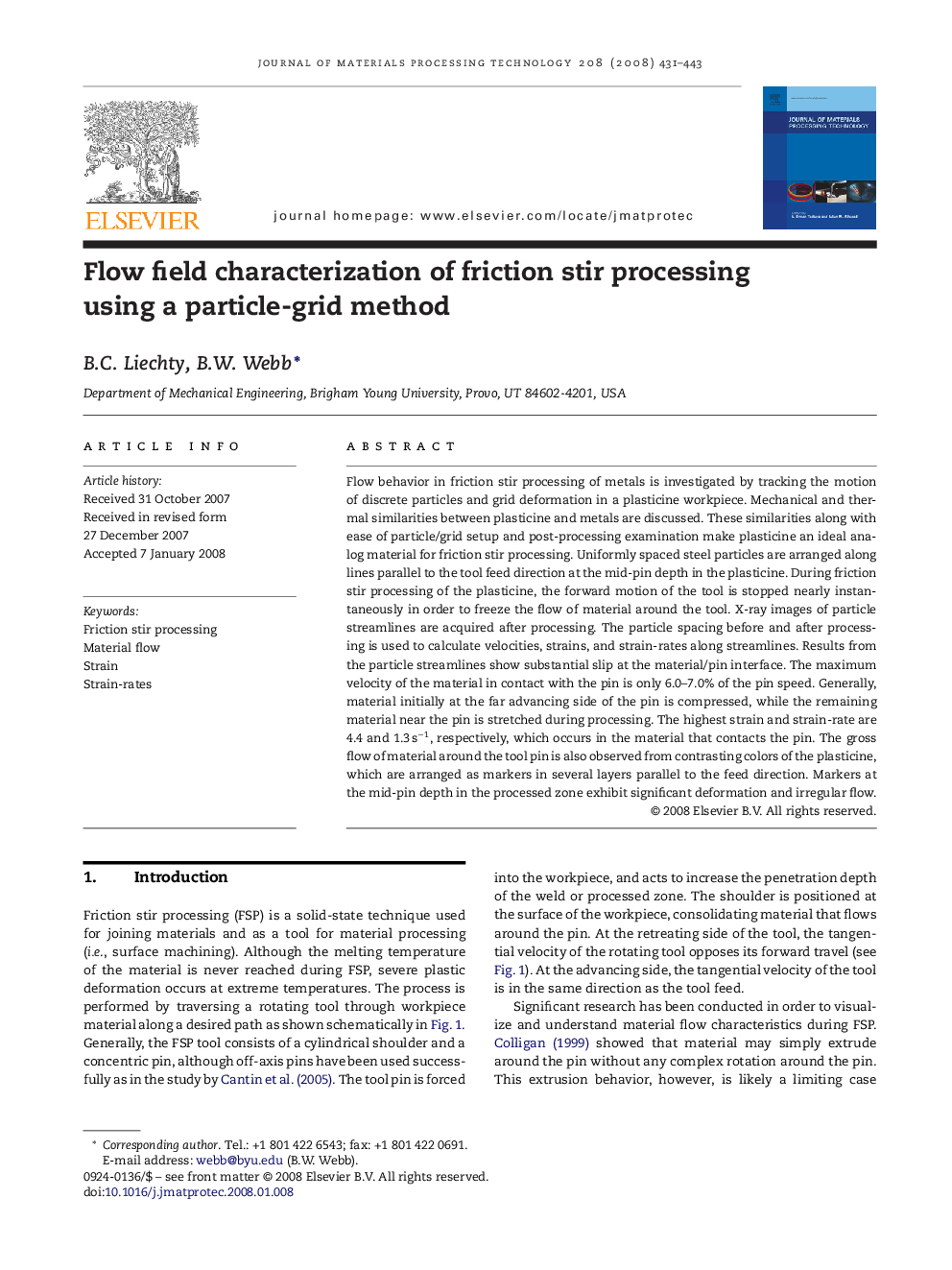| Article ID | Journal | Published Year | Pages | File Type |
|---|---|---|---|---|
| 795178 | Journal of Materials Processing Technology | 2008 | 13 Pages |
Flow behavior in friction stir processing of metals is investigated by tracking the motion of discrete particles and grid deformation in a plasticine workpiece. Mechanical and thermal similarities between plasticine and metals are discussed. These similarities along with ease of particle/grid setup and post-processing examination make plasticine an ideal analog material for friction stir processing. Uniformly spaced steel particles are arranged along lines parallel to the tool feed direction at the mid-pin depth in the plasticine. During friction stir processing of the plasticine, the forward motion of the tool is stopped nearly instantaneously in order to freeze the flow of material around the tool. X-ray images of particle streamlines are acquired after processing. The particle spacing before and after processing is used to calculate velocities, strains, and strain-rates along streamlines. Results from the particle streamlines show substantial slip at the material/pin interface. The maximum velocity of the material in contact with the pin is only 6.0–7.0% of the pin speed. Generally, material initially at the far advancing side of the pin is compressed, while the remaining material near the pin is stretched during processing. The highest strain and strain-rate are 4.4 and 1.3 s−1, respectively, which occurs in the material that contacts the pin. The gross flow of material around the tool pin is also observed from contrasting colors of the plasticine, which are arranged as markers in several layers parallel to the feed direction. Markers at the mid-pin depth in the processed zone exhibit significant deformation and irregular flow.
